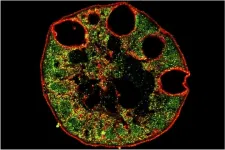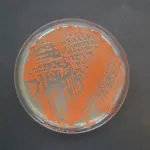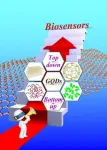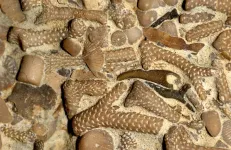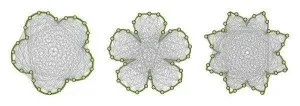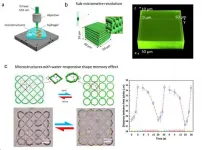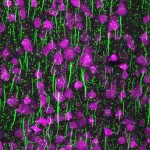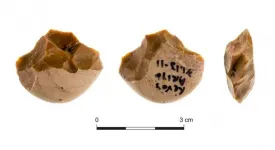Scientists discover link between nicotine and breast cancer metastasis
2021-01-21
(Press-News.org) WINSTON-SALEM, N.C. - Jan. 20, 2021 - Breast cancer is the second most common cancer among women in the United States, and cigarette smoking is associated with a higher incidence of breast cancer spread, or metastasis, lowering the survival rate by 33% at diagnosis.
While cigarette smoking's link to cancer is well-known, the role of nicotine, a non-carcinogenic chemical found in tobacco, in breast-to-lung metastasis is an area where more research is needed.
Now, scientists at Wake Forest School of Medicine have found that nicotine promotes the spread of breast cancer cells into the lungs.
The study is published in the January 20 online edition of Nature Communications.
"Our data shows that nicotine exposure creates an environment in the lungs that is ripe for metastatic growth," said Kounosuke Watabe, Ph.D., lead author of the study and professor of cancer biology at Wake Forest School of Medicine, part of Wake Forest Baptist Health.
This environment is called a pre-metastatic niche, which attracts pro-tumor neutrophils, a type of immune cells. The pre-metastatic niche releases a protein called STAT3-activated lipocalin 2 (LCN2) from the neutrophils to induce metastatic growth.
For the study, Watabe's team first studied 1,077 breast cancer patients and found that current smokers or former smokers have a higher incidence of lung metastasis compared to patients who never smoked.
Then, using a mouse model of breast cancer metastasis, the researchers discovered that persistent exposure to nicotine generates an inflammatory microenvironment in the lungs characterized by an influx of activated neutrophils to create a pre-metastatic niche.
Even after quitting nicotine for 30 days, the incidence of distant metastasis was not reduced, suggesting an ongoing risk for breast cancer patients who are former smokers.
Watabe and colleagues also looked for a drug that might block this accumulation of neutrophils and identified salidroside, a natural compound found in the plant Rhodiola rosea. This compound, which has anti-inflammatory, anti-cancer and anti-viral properties, significantly decreased the number of pro-tumor neutrophils and subsequently reduced the incidence of lung metastases in mice.
"Based on these findings, breast cancer patients should opt for smoking cessation programs that do not use nicotine replacement products," Watabe said. "Furthermore, our findings show that salidroside may be a promising therapeutic drug to help prevent smoking-induced breast cancer lung metastasis, although more research is needed."
INFORMATION:
Funding for the study was provided by NIH grants R01CA173499, R01CA185650, R01CA205067, R37CA230451 and T32CA247819.
ELSE PRESS RELEASES FROM THIS DATE:
2021-01-21
No evidence so far indicates that food or drinks can transmit the virus that causes COVID-19, but new research at Washington University School of Medicine in St. Louis suggests that people with problems in the upper gastrointestinal (GI) tract may be vulnerable to infection after swallowing the virus.
Studying tissue from patients with a common disorder called Barrett's esophagus, the researchers found that although cells in a healthy esophagus cannot bind to the SARS-CoV-2 virus, esophageal cells from patients with Barrett's have receptors for the virus, and those cells can bind to and become infected by the virus that causes COVID-19.
The study is published online Jan. 20 in the journal Gastroenterology.
"There ...
2021-01-21
20 January 2021/Kiel. Numerous natural products are awaiting discovery in all kinds of natural habitats. Especially microorganisms such as bacteria or fungi are able to produce diverse natural products with high biomedical application potential in particular as antibiotics and anticancer agents. This includes the so-called red yeast of the species Rhodotorula mucilaginosa, isolated from a deep-sea sediment sample from the Mid-Atlantic Ridge and analyzed for its genome and chemical constituents by researchers from GEOMAR Centre for Marine Biotechnology (GEOMAR-Biotech) ...
2021-01-21
In a paper published in NANO, researchers from Hubei, China discuss the top-down and bottom-up strategies for the synthesis of Graphene quantum dots (GQDs). The respective advantages and disadvantages of these methods are summarized. With regard to some important or novel ones, the mechanisms are proposed for reference. In addition, the application of GQDs in biosensors is highlighted in detail.
At present, various top-down methods, such as oxidative cutting, hydrothermal or solvothermal reactions, electrochemical oxidation, ultrasonic-assisted or microwave-assisted process, chemical vapor deposition (CVD) have been reported to produce GQDs. Meanwhile, the bottom-up methods have been ...
2021-01-21
Changes in climate that occur over short periods of time influence biodiversity. For a realistic assessment of these effects, it is necessary to also consider previous temperature trends going far back into Earth's history. Researchers from the University of Bayreuth and the University of Erlangen-Nuremberg show this in a paper for Nature Ecology and Evolution. According to the paper, future climate-related species extinction could be less severe than predictions based only on the current trend of global warming. However, the researchers do not give the all-clear. At present, the effects of climate change are being exacerbated ...
2021-01-21
In nature, many things have evolved that differ in size, color and, above all, in shape. While the color or size of an object can be easily described, the description of a shape is more complicated. In a study now published in Nature Communications, Jacqueline Nowak of the Max Planck Institute of Molecular Plant Physiology and her colleagues have outlined a new and improved way to describe shapes based on a network representation that can also be used to reassemble and compare shapes.
Jacqueline Nowak designed a novel approach that relies on a network-based shape representation, named visibility graph, along with a tool for analyzing shapes, ...
2021-01-21
The study explains the benefits of both the wing shape and the flexibility of their wings.
The Lund researchers studied the wingbeats of freely flying butterflies during take-off in a wind tunnel. During the upward stroke, the wings cup, creating an air-filled pocket between them. When the wings then collide, the air is forced out, resulting in a backward jet that propels the butterflies forward. The downward wingbeat has another function: the butterflies stay in the air and do not fall to the ground.
The wings colliding was described by researchers almost 50 years ago, but it is only in this study that the theory has been tested on real butterflies in free ...
2021-01-21
Three-dimensional (3D) direct laser writing (DLW) based on two-photon polymerisation (TPP) is an advanced technology for fabricating precise 3D hydrogel micro- and nanostructures for applications in biomedical engineering. Particularly, the use of visible lasers for the 3D DLW of hydrogels is advantageous because it enables high fabrication resolution and promotes wound healing. Polyethylene glycol diacrylate (PEGda) has been widely used in TPP fabrication owing to its high biocompatibility. However, the high laser power required in the 3D DLW of PEGda microstructures using a visible laser in a high-water-content environment limits its applications to only those below the biological laser power safety level.
In a new paper ...
2021-01-21
Rather like David versus Goliath, it appears that Saturn's tilt may in fact be caused by its moons. This is the conclusion of recent work carried out by scientists from the CNRS, Sorbonne University and the University of Pisa, which shows that the current tilt of Saturn's rotation axis is caused by the migration of its satellites, and especially by that of its largest moon, Titan.
Recent observations have shown that Titan and the other moons are gradually moving away from Saturn much faster than astronomers had previously estimated. By incorporating this increased migration rate into their calculations, the researchers concluded that ...
2021-01-21
To process information in our brains, nerve cells produce brief electrical impulses, called action potentials, triggered from one highly specialized region. Research from the Netherlands Institute for Neuroscience, together with researchers from Heidelberg University and the University of Göttingen in Germany, now show that the electrical trigger sites surprisingly change with experience; they are either becoming smaller with increasing number of experiences and, vice versa, they grow larger when less input arrives in the brain. The results were published in Nature Communications.
Exploring the environment
Rodents learn about their environment by moving their highly sensitive whiskers, with which they touch ...
2021-01-21
Researchers from the Sonia and Marco Nadler Institute of Archaeology at Tel Aviv University unraveled the function of flint tools known as 'chopping tools', found at the prehistoric site of Revadim, east of Ashdod. Applying advanced research methods, they examined use-wear traces on 53 chopping tools, as well as organic residues found on some of the tools. They also made and used replicas of the tools, with methods of experimental archaeology. The researchers concluded that tools of this type, found at numerous sites in Africa, Europe and Asia, were used by prehistoric humans at Revadim to neatly break open bones of medium-size animals such as fallow deer, gazelles and ...
LAST 30 PRESS RELEASES:
[Press-News.org] Scientists discover link between nicotine and breast cancer metastasis
